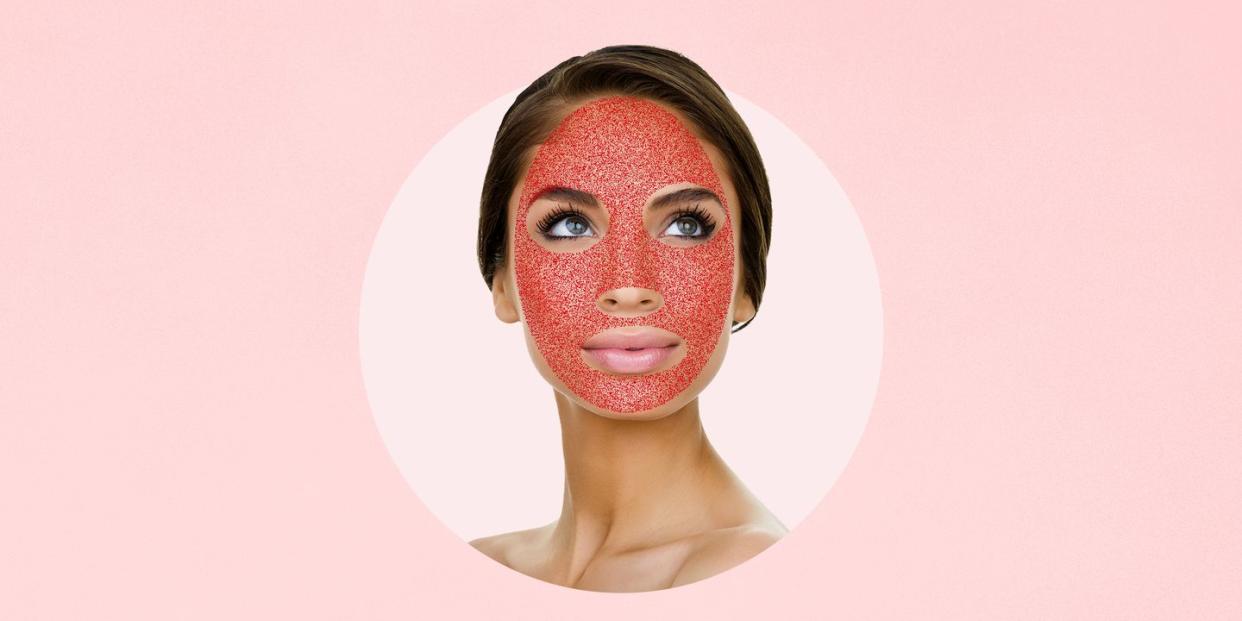What Is a Vampire Facial?

Any skincare expert will tell you that the "vampire facial" was made famous by none other than Kim Kardashian. If you happened to be following the pop culture mogul back in 2013, chances are you probably saw a post on her account featuring her face slathered in blood. Not to be alarmed, it wasn’t a crime scene, nor was it Halloween makeup. In fact, it was her own blood plasma, used on her face in a process that effectively increases collagen production and rejuvenates skin.
Years later, the vampire facial is still going strong, and celebrities and skincare enthusiasts alike have implemented this seemingly gory practice into their own wellness routines. So, why is this procedure so popular, and how exactly does it work? Here to answer all of your questions, is NYC Board-Certified Dermatologist and Yale School of Medicine alumni Dr. Elaine Kung.
What is a vampire facial?
The vampire facial process is much more involved than simply smothering blood on one's face. “The vampire facial starts with microneedling followed by the application of one's own plasma-rich platelet serum,” says Dr. Kung. Microneedling, or collagen induction therapy, is a common term used in the world of dermatology to describe a minimally invasive procedure where small holes are created in the skin with the use of extremely small or “micro” needles. “This produces microchannels that increase skin permeability and simultaneously stimulate growth factor release,” Dr. Kung adds. Essentially, it helps ramp up production of your skin's own collagen—the building block of a firm, bouncy, youthful complexion.
What is PRP, and who benefits most from it?
The platelet-rich plasma, or PRP, is produced after the blood extraction process. When blood is placed in a centrifuge machine, it separates into distinct layers, one of which is a serum containing high concentrations of platelets (a component in the body's natural healing system) and growth factors, known as PRP. “Microneedling creates openings for the enhanced penetration of PRP serum, which benefits people who want improvement in acne scars, skin texture, fine lines, wrinkles, and stretch marks,” explains Dr. Kung.
How long do the effects of vampire facials last?
Dr. Kung. tells T&C that the collagen production triggered by vampire facials may continue for 2 months after the procedure. As for the results of the facial, they may last for 6 months or more, depending on one's age, condition, and desired results. So when do you have to go back to the dermatologist's office for another vampire facial appointment? “Maintenance treatments are suggested every 3 to 12 months,” answers Dr. King.
How expensive is a vampire facial?
This depends on your aesthetic provider, but generally the treatment varies between $900 - $2500.
What should you expect after the treatment?
If you have plans to go out after your vampire facial, you might want to go ahead and cancel, unless you don’t mind walking around in public with a layer of PRP on your face. Part of the process is accepting that you’ll need to have a sticky serum on your face for about a day.
“After the vampire facial, we suggest PRP to be left on the face for at least 24 hours,” says Dr. Kung. That means, you should avoid using cleanser or makeup for at least 24 hours following your treatment. “Also, you have to tolerate redness, minute crusting, and possible bruising for a few days. Although in the right hands, there shouldn't be scary outcomes such as scarring or infections.”
Are vampire facials painful?
Long story short, this answer is subjective, depending on your relationship with needles and your pain tolerance.
“This procedure is not for the needle-phobic; however, for those who are not needle-shy, the vampire facial is quite manageable,” says Dr. Kung. The microneedles are similar to the thickness of acupuncture needles—the sensation is often described by patients as more like a sanding scratching experience than a needle puncture—and the way in which blood is extracted for the purpose of obtaining PRP is equivalent to that of a routine blood test.
What is the best alternative to a vampire facial?
For those who have a low pain tolerance, but would like to achieve the glowing after-affect of a vampire facial, is there an alternative option? Yes, and there's no need for blood to be involved.
Where vampire facials require a microneedling device called a Dermapen, the alternative relies on an energy-based microneedling device that delivers radiofrequency through microneedles (RFMN). “For example, the skin penetration trauma by the Lumenis Legend Pro is minimal because its needles are the finest in the global market (150 microns),” says Dr. Kung. “In addition, the radiofrequency emitted from the device also cauterizes any potential bleeding from the procedure.
You Might Also Like

